
21 minute read
THE MOMENT
when they realized they were on the right track, had what it took and were indeed capable of being who they wanted to be from that moment on. Five stories of alumni who were ready when their moment arrived.
Former Reporter editor Myron Medcalf
The Editor-In-Chief didn't hesitate, and beat others to the incendiary scene.
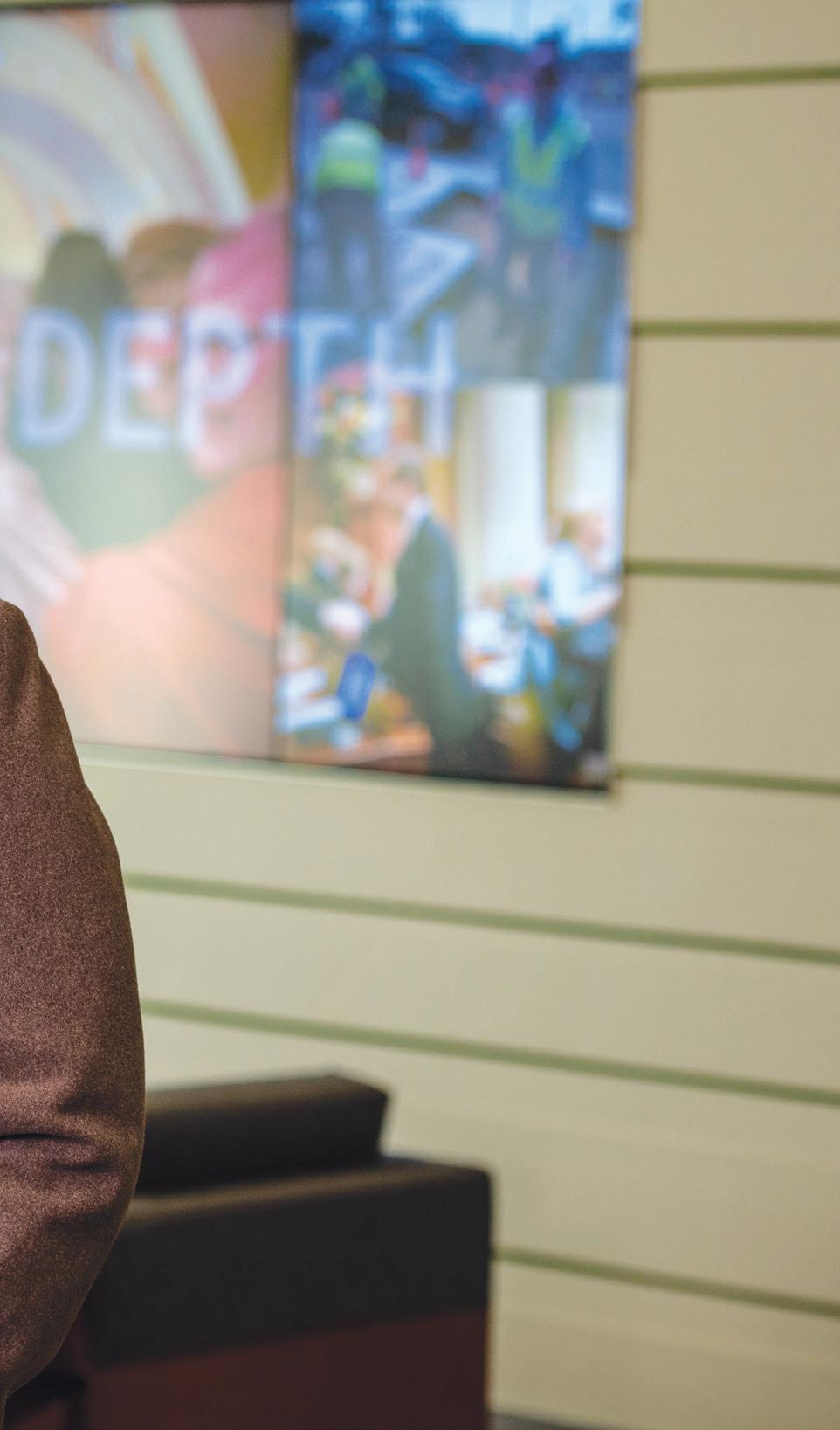
Myron Medcalf was live on the KMSU airwaves during a balmy Homecoming Weekend on Oct. 4, 2003. The editor-in-chief of The Reporter, Minnesota State Mankato’s student newspaper, co-anchored a sports talk show Saturdays from 10 p.m. to midnight. Midway through the evening’s show, Medcalf and co-host Brian Boothe received a rare call from a listener, struggling to catch his breath while describing a dangerous standoff unfolding between law enforcement and students just a couple blocks from the campus radio station. “I said, ‘Brian, put down the headset, run to the scene,’” Medcalf recalled. “Brian literally sprinted over, and Brian’s calling in now from the scene and he confirms everything. The streets are going crazy in Mankato. “We went into reporter mode and did what a news team does— we were the first news team on the ground for that riot,” Medcalf said. “It was our school, so we wanted to be on top of it.” Homecoming weekend parties had converged and gone awry.
Drunken behavior descended into chaos. Up to 3,000 participants loitered into the wee small hours, setting fire to vehicles, dumpsters, trash bins and wooden fences. More than 150 police officers across 41 agencies arrived to quell the crowd. “We wanted to make sure that no one beat our coverage,” Medcalf said. “And I’ve got to be honest: I don’t think anyone did.” The Reporter’s unflinching, acerbic coverage spared no one. The spirited writing exercises Medcalf conducted the previous summer bore fruit. “Riot! They Never Imagined” blared the headline. “Rioters Wreak Havoc, Epitomize Lawlessness” and “The Blame is Everywhere” read another. “Excessive Force?” The paper pondered in a later issue. “We saw those things firsthand,” he said. “Our coverage was rooted in that. We lived it.” The events of that evening indirectly laid the groundwork for Medcalf’s journalism career. In the days after the melee, he assisted veteran Star Tribune writer Bob Franklin in locating information on the arrested students. Franklin recommended Medcalf apply for a Star Tribune internship. “That’s how I ended up at the Star Tribune,” Medcalf said, “through the riot.”
Open doors

dorm room in summer 2001 to begin his freshman year as a running back on the Mavs’ football team. His athletic career at the University, however, ended abruptly when, in spring 2002, he broke his jaw during practice. Before returning for his sophomore year, he emailed then-Reporter editor-in-chief Sarah Ibero, inquiring about a position. “I’d always wanted to write and be involved in journalism,” he said. “I jumped in with both feet and never looked back.” Ellen Mrja, a since-retired professor in the mass communication department and former advisor to The Reporter, spotted the “it” factor in the burgeoning journalist. “From the very beginning, Myron had great talent in terms of writing and editing,” Mrja said. “He had the leadership and charisma, and the department had seen him as a great student.” In spring 2003, Medcalf decided against running for the vacant editor in-chief-position. But Mrja—“one of my favorite human beings on Earth,” he said—refused to let her promising student pass up the opportunity. “I could see he was the perfect editor-in-chief because one of the things the editor has to do is convince the writers to pull together and pursue certain things,” Mrja said. “He had that innate talent and certain intangibles.”
Great expectations

At 19, Medcalf became the Reporter’s first Black editor-in-chief during the 2003-2004 academic year. Throughout the year, Medcalf estimates he oversaw around 50 aspiring writers. He also started the University’s first chapter of the Society of Professional Journalists. “We were all in,” he said. “My hope was: ‘How many people can I get involved?’ It was pretty remarkable. There was an interest and a buy-in that I could appreciate.” Medcalf forged tight bonds with his coworkers during the frenetic, caffeine-fueled evenings in the Reporter office, building an independent newspaper. “It was definitely exciting that year,” said Tanner Kent ‘06, The Reporter’s assistant news editor at the time. “Myron had expectations and he backed it up.” Myron spoke with Today Magazine the night before flying to Kansas City to cover college basketball for ESPN, his employer for the past decade. Despite his national profile with the Worldwide Leader in Sports, a social media following and bimonthly column in the Star Tribune, Medcalf insists nothing
quite compares to Reporter production nights in the Centennial Student Union. “Getting that paper out the door, man, the pressure of that, the intensity—it’s still one of my favorite experiences of my whole life,” he said. In 2003, Medcalf broadened his journalistic talents by launching “The Ace and Boothe show” with encouragement from then-KMSU Station Manager Jim Gullickson. Medcalf also gained valuable broadcasting experience as the public address announcer at Mavericks athletic events. “Myron is a special guy,” Gullickson said. “I’d walk around the student union and you’d see students reading the paper. It was cool to see. … I’m super impressed that he parlayed what he learned at KMSU.” Medcalf, who had no formal broadcast training, credits his KMSU show with providing an outlet to hone his radio skills in a low-pressure setting. The gig led Medcalf to becoming a nationally syndicated ESPN Radio personality. “I don’t think I’d ever be at ESPN without KMSU,” he said. “As a matter of fact, I know I wouldn’t.”
B.A.M.M.
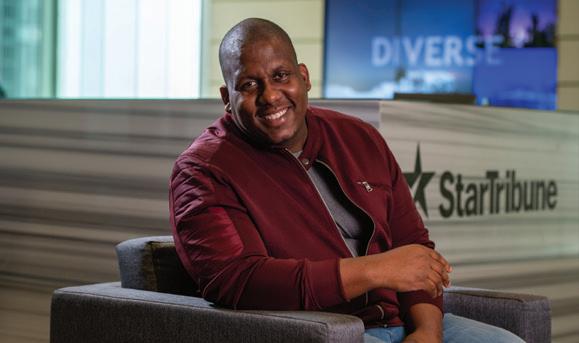
For many readers, Medcalf’s tenure at the helm of the Reporter is most remembered for a bracing column that debuted on Thursday, Sept. 18, 2003. He titled it B.A.M.M.— “Black and Angry Myron Medcalf”—and tackled racial topics in blunt, assertive language. In his first dispatch, Medcalf called for reparations for Black Americans; a column after the riots shined a light on white male privilege. “I understood my position,” he said. “If you’re going to hire me and you want my perspective and my opinion and my voice, I’m going to give it to you.” The visceral feedback from readers ranged from empathetic to defensive to flat-out racist. In later issues, Medcalf printed dozens of replies both supporting and criticizing his commentaries in the Reporter’s Letter to the Editor section. In a rare exception to his no-profanity editorial policy, Medcalf published transcriptions of racist slurs left on his voicemail. “There was definitely a reaction,” he said. “It changed a lot for me, honestly. People still talk to me about it today. B.A.M.M.—you either loved it or hated it—but it was definitely something people remember.” In later columns, Medcalf spoke out against cultural appropriation, slavery, systemic racism and Columbus Day. “Myron was writing stuff that was uncomfortable for some people,” Gullickson said. “I think it was amazing, that he was addressing this before it became part of the public dialogue.” In summer 2004, Medcalf interned at ESPN The Magazine in New York City, and remained a Reporter staff writer before graduating in 2005. The Star Tribune tabbed Medcalf to cover the University of Minnesota’s college basketball team before ESPN hired him in 2011 for its national college basketball beat. “I got some great opportunities at Mankato,” he said. “It changed my whole life.” Medcalf’s life changed again after May, 25, 2020, when a Minneapolis police officer killed George Floyd. That fall, several months after the harrowing Twin Cities riots, Medcalf became a leading Black voice at the Star Tribune when he returned to pen a bimonthly Sunday column that broached the same issues spotlighted in B.A.M.M. “For me, [B.A.M.M.] is a reference point. I tell people: ‘I didn’t just start talking about these issues today,’” said Medcalf, who lives in the Twin Cities suburbs. “If I never got a column, I’d still talk about these issues.” “Myron’s reappearance on the pages of the Star Tribune in the wake of George Floyd’s murder as a Sunday columnist marks another significant moment in his career,” said former mass communications professor John Gaterud. “He continues to develop, stretch and mature as a writer of consequence, I believe. He knows the value of hard work, keen observation and the power of the press to give voice to the voiceless.” While the message remains the same, his Star Tribune column is more akin to B.A.M.M. 2.0. Medcalf’s tone is sharper and more refined, written from the perspective of a father of three Black daughters who’s using his platform to jumpstart conversations. “This is more of a tempered version of B.A.M.M.,” he said. “But B.A.M.M. started the idea of: I think I have something to say.” Medcalf says with a rueful chuckle that reader responses from his Sunday column aren’t far removed from the hateful rhetoric he received at the Reporter. Still, he adds, dissenting viewpoints can lead to constructive discussions. “The positive is, I’m overwhelmed by the response of people who want to build relationships,” he said. “That’s what I value. I get people who disagree with me, but still want to have a conversation, and I respect that. That’s ultimately the goal—if we talk about these issues in a way that leads us somewhere.” —Drew Lyon ’06 Read an expanded version of this article online at today.magazine.mnsu.edu Myron Medcalf today.
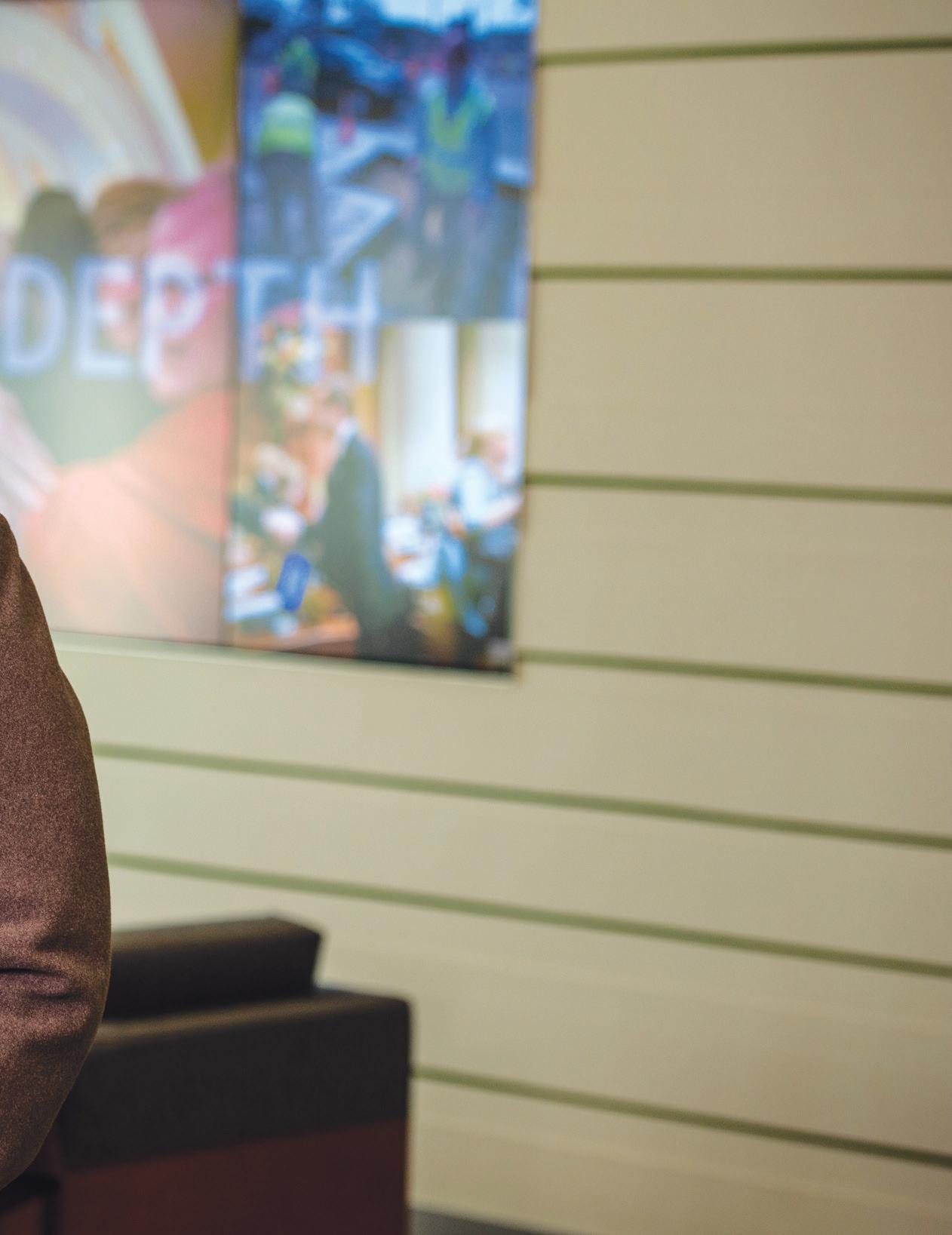
A reluctant candidate meets unwavering success.
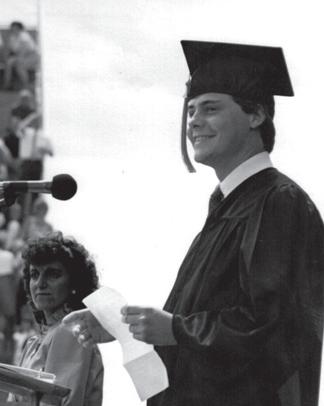
Jim Lund ’85, ’86 gets put in charge a lot. “I keep getting thrown into leadership positions, and I guess it’s just the way of the world," he said. “That’s who I am and how people see me. I should just accept that and go with it.” He does admit to an ongoing desire to change things for the better if nobody else is trying. The biggest example, perhaps, is when he created a Twin Cities financial advising firm once he felt he could improve the industry by doing so. That approach crystalized and became apparent to Lund years earlier when, in 1984, he was a Minnesota State Mankato biology major from St. Paul who decided to run for student president. He and VP candidate Sandy Schoonover had formed the College Action Party with the issues of the day being tuition, fees and parking. Lund said his thinking was: Somebody’s got to do it. “I ran on a platform of ‘I don’t really want this job, but I know that it’s important,’” Lund said. “If you’re going to have a voice, you’ve got to work with the system that’s available.’ He won the election. Later that same year he was selected by Minnesota Gov. Rudy Perpich to serve as student representative on the board of trustees that oversaw the operation of all schools in the state university system. The election win and subsequent appointment, both in his junior year at the University, clinched his role as a leader—reluctant or otherwise. As a graduate student, he was instrumental in obtaining funding for the stone arch on the campus walkway and what would come to be named the Ostrander-Student Memorial Bell Tower that stands in the campus arboretum. After receiving his MBA from the University, Lund’s post-college career in financial services began with working for American Express. He remained with the firm for 27 years,
Jim Lund has always found himself jumping into situations to improve circumstances. leaving in 2013 to form his own financial services company to better serve clients and, in doing so, the industry. Today he heads NorthRock Partners, a multi-faceted financial planning agency in Minneapolis. The firm manages more than $1.7 billion with a team Elected student body president of about 40 people. in 1984, Jim Lund’s confidence in More than anything, he accepting leadership roles began. said, winning the college election solidified that he was built to lead when change was needed. “I think my [campaign] related to why I’d be willing to step into the ring and donate the time and work for the broader good of the student population.” While a graduate student, he was approached by the Democratic party in Minnesota and encouraged to run for state legislature. He declined. It was validating, again, but he preferred real-world experience to political office. He’s since become used to being the one called upon to take the helm of efforts large and small. "I didn’t think of myself as a natural born leader, yet people see that in me. For example, in my church I simply wanted to go on a mission trip. Now all of a sudden I’m running it. Why? I don’t know—maybe I’m a glutton for punishment... At the end of the day I apply my own sense of common sense and logic to handle whatever situations are coming up. And A campaign handout evidently that appears to others to be leaderful.” for Lund’s successful —Joe Tougas ’86 run for office.
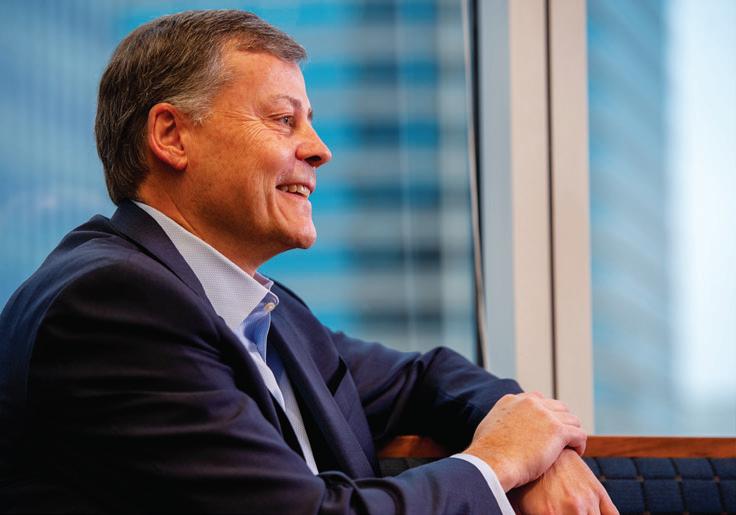
The lights of the theater dimmed, the audience hushed and Kimberly Willow ’12 readied for her entrance as the sole character, Athena, on the dark stage for the beginning of “The Odyssey.” Ordinarily a big moment for any acting student at Minnesota State Mankato, Willow found it to be far more. The thirdyear student from Spencer, Iowa, found herself about to take the stage of the Kennedy Center for Performing Arts in Washington, D.C. “It really hit me right before I went on,” she said. “I was like: OK. Here I am. And I know what to do, I’ve been doing it since November.” Backstage, Clayton Rutschow ’11 was pacing. Only months prior, it seemed, the junior had faced down frustration and self-doubt about his acting abilities and now was eager to get on stage and have a good time in the leading role of Odysseus. Submitted as an entry in the 2010 Region V Kennedy Center American College Theater Festival at Ames, Iowa, the drama and the pair’s performances kept advancing in competition to the point where it bested more than 1,300 entries to be one of four staged at the Kennedy Center April 21, 2011. Willow and Rutschow both recall vividly how it felt before taking the Kennedy Center stage, and they both recall it validating the choices they’d made in their lives and school careers up to that point. “I never had doubts of what I wanted to study in college,” Willow said. “But knowing what you want to study is different than being successful in what you’re studying and feeling quite confident in your future in that field.” In that D.C. trip, Rutschow spent most of his time in his hotel room rehearsing his lines. He was awed by the Kennedy Center’s theater space, which he found majestic— “perfectly built for theater. You have this accommodating atmosphere that is begging you to go out and perform.” Then came show time. “There’s actually a half hour before Odysseus comes out,” he said. “I remember being in the dressing room. I couldn’t sit still, thinking: ‘I just want to get out on stage. This is that moment. This is the zenith. We’ve reached the top.’” Both found the show exhilarating, an experience that served them throughout their lives. “That whole process was very validating for me,” Willow said. “I really felt ‘Yeah, I’m doing the right thing. This is my direction, this is where I’m going. It’s working.” Rutschow said he was able to approach the Kennedy Center performance with the same concentration and work ethic as he had in performances leading up to that championship show. He laughs that he still needs to return to D.C. to see the national monuments as he spent all his time preparing for the play. “Just staying dedicated to the same work ethic I put in from the start was something I had vowed to carry through to the end,” he said. “To this day I still apply that: You can live with the pain of regret or you can live with the pain of discipline. Which one do you want? It’s not always fun running your lines over and over on the weekend, and you want a break …. but if I would have screwed up even one line I would have regretted it. And I regret absolutely nothing.” After some acting work in Seattle and the Twin Cities, Rutschow is now a freelance writer and personal trainer in Red Wing. He mentors actors in the Twin Cities where he also teaches battle and stunt choreography. Willow’s acting at the Kennedy Center received top honors as well—the national Distinguished Performance Award. Today she works several roles in Minneapolis area theater as music director, choreographer and actress. She lives with her husband and their toddler. “It definitely was an experience that helped shape a lot of future direction for me in terms of validating the direction I’m going,” she said. "And also seeing theater outside of college, seeing where things go, seeing the professional venues, seeing how these networks are established in the theater world. The professional theater world is a very connected world, and I think that was an eye-opening experience for me in what that world looks like.” Receiving the national acting award was gratifying, she said, but the production proved to be a case study of collaboration in which all involved were responsible for any and all recognition. “But it’s still on my resume,” she smiled. "I haven’t taken it off.” Willow and Rutschow today, and in a 2010 scene from "The Odyssey."


—J.T. ’86
Jamie Pass' work in a phenomenal 1993 comeback remains motivational

Jamie Pass ’96 is one of those friends or family members you need when things look hopeless. The one with encouraging words about keeping your head in the game and not giving up. And the story he uses to back it up is an historic moment in Maverick sports. “When something’s big and you’re in a moment, you have to concentrate on what’s important to get the job done. Then there is no pressure. And I think that’s what we did in that game.” That game. It was Minnesota State Mankato's homecoming 1993, and Pass was in his third year as starting quarterback for the Mavericks. Up against first-place North Dakota State University, the Mavericks were completely scoreless in the first half as North Dakota cruised by with three touchdowns. There had been at least two heartbreaking passes dropped by a Mavs’ receiver. It was 21-0 at the end of the third quarter. Then the surge happened. Pass threw four touchdowns in the remainder of the game to not only close in but eventually tie the North Dakota with a few minutes left. Pass’ friend and roommate was the team’s kicker who would attempt the game-winning kick. “Normally when he’d come out to kick a field goal or extra point we would just kind of joke around with each other,” Pass said. “And I was thinking OK—what wise thing can I say
Jamie Pass in 1993 as a junior. to this guy so that he stays calm and makes the kick? And I thought, nah, I’m just going to keep my mouth shut. … So I didn’t say anything. He put it through the uprights and it was over.” Pass’ performance in that incredible comeback not only became a legendary story in Maverick sports history, it earned him Sports Illustrated’s College Player of the Week. Yes, he said, it gave him confidence about his ability to throw a ball and lead a team, but he knew better than to think he was solely responsible for the victory. It’s a truth he’s since applied to work and family. “Earlier in the game, we had a receiver drop two touchdown passes,” said Pass. “We didn’t get on him, didn’t yell at him. I knew this kid was capable of making those plays, and he’s the one who in the second half made two of ‘em to get a couple of scores. It’s believing in yourself and the guys around you that do their parts. “You’re a product of the environment around you,” said Pass. “I was only as good as the ones blocking for me, the ones catching the ball. That’s what it comes down to. Those awards I did receive were a reflection of all the hard work our team did together.” After leaving the University, Pass played professionally in the U.S. and overseas. He returned to the University to get his degree in psychology with a law enforcement minor. For the past 20 years he’s been in the scrap metal industry and living in the Chicago area. His take on that amazing game and his role in it remains big-picture as opposed to egocentric. “That stuff doesn’t just turn on in a game. It’s developed in the off-season, through the workout programs His experience on the Maverick football when you’re getting up at 7 in the morning to go run. team and the 1993 homecoming game in And Friday morning breakfast clubs and stuff like that. particular gave Jamie Pass an outlook on That’s where the fabric is developed. The game’s just life that stands to this day. the fun part.”

—J.T. ’86

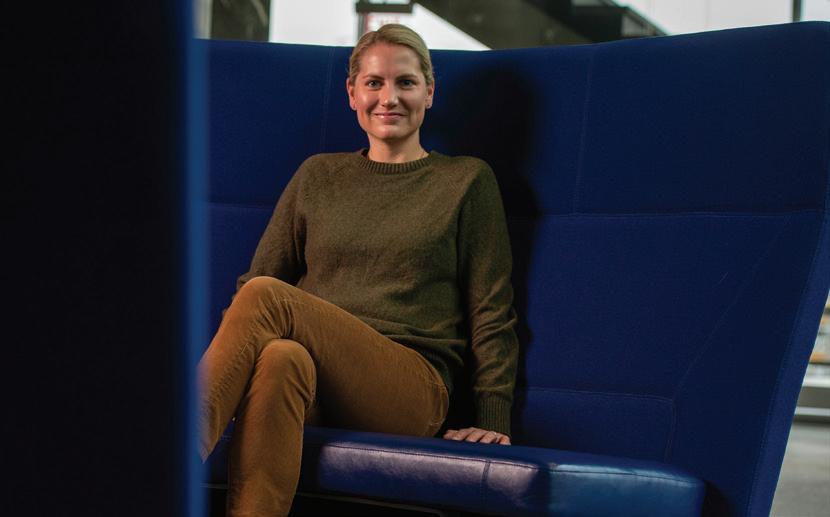
In a championship game, a risky move made all the difference.
With seven minutes left in the national championship basketball game, Tiffany Moe ‘11 on a fast break had a moment to decide: Take the sure shot in front of her or risk it and pass behind her. Her decision shaped the game and helped win the national title. Moe, a junior, was consistent, competitive and as dependable as anybody on the 2009 Maverick women’s basketball team, which faced Franklin Pierce in the NCAA Division II championship game that year. The Mavs had been trailing throughout the game, and with the score at 84-81 Moe was driving toward the net and an easy two points to narrow that gap. In a moment that is still talked about to this day, she passed the ball back to Heather Johnson, who was poised to make a three-pointer that could tie the game. “I’m in that lane, I’m going up to take it and I hear Heather Johnson say ‘Trail. I’m trailing,’” Moe recalled. “In that moment I’m thinking, cognizant of the time, cognizant of the score, knowing we’re a couple of huge plays away from shifting this momentum, I thought: ‘That’s it. She’s clutching these moments, she’s our best shooter, she’s going to be a hall-of-famer someday. “I literally heard her”—Moe snapped her fingers—"and didn’t think twice and turned around. I trusted it the whole way.” Johnson made the shot, tying the game at 84-84 with just under seven minutes remaining. The Mavericks never trailed again in the game, ultimately winning the national championship 103-94. Moe went on to coach basketball and today lives in the Twin Cities. She remains close friends with many on the team. Those friendships were key to making that particular team work, she said. “We developed something a lot of college athletes and coaches dream about, and that’s simple chemistry,” she said. “Knowing what kind of mindset one player and one team member is in every single game. And it’s maybe different, but understanding and maybe channeling the direction they were going. We had that. You didn’t even have to speak about it. You just knew.” “All it takes is a simple choice to change the narrative, a simple choice to change the pace of life.” -Tiffany Moe ’11 Moe had come to the University from Brookings, S.D., joining the team as a first-year student. “I came in and I was young and I was working with these talented individuals who were competitors and brought this level out of me as me being a competitor. I hate losing.” While competitive, she said, she wasn’t after individual glory—which clearly led to the decision to pass vs. shoot on that play in 2009. “When I speak about myself competitively, it’s competitive in the sense that the team needs to win,” she said. “I’m not one who needs accolades. I’ll get mine when I get mine, essentially. When it comes to crunch time, I’m going to help carry us.” “That moment still means a lot to a lot of us, to the entire team and the entire community. What it brings into perspective is that all it takes is a simple choice to change the narrative, a simple choice to change the pace of life. You just have to trust the process and trust yourself,” she said. “Sometimes you’re going to make decisions that seem crazy to some people. And they may go through the rim and they may not. Just trust the process.”
Moe in action, 2009.
—J.T. ’86









